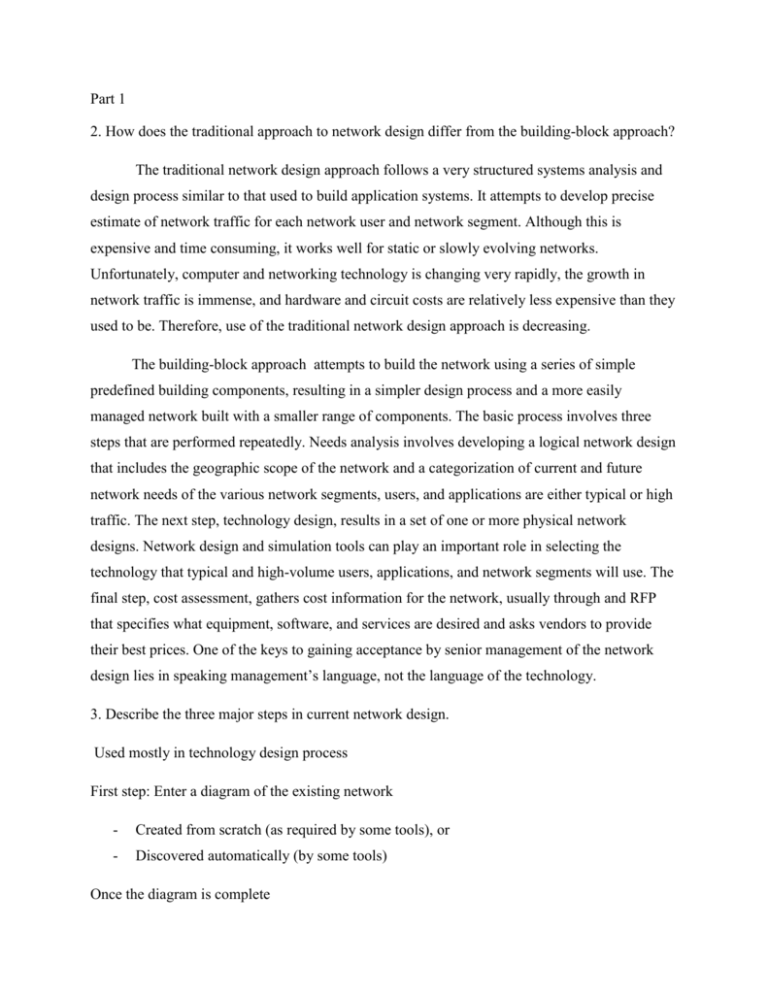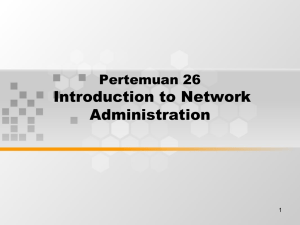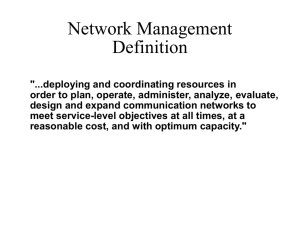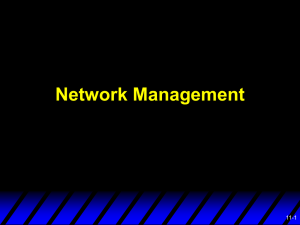assignment12
advertisement

Part 1 2. How does the traditional approach to network design differ from the building-block approach? The traditional network design approach follows a very structured systems analysis and design process similar to that used to build application systems. It attempts to develop precise estimate of network traffic for each network user and network segment. Although this is expensive and time consuming, it works well for static or slowly evolving networks. Unfortunately, computer and networking technology is changing very rapidly, the growth in network traffic is immense, and hardware and circuit costs are relatively less expensive than they used to be. Therefore, use of the traditional network design approach is decreasing. The building-block approach attempts to build the network using a series of simple predefined building components, resulting in a simpler design process and a more easily managed network built with a smaller range of components. The basic process involves three steps that are performed repeatedly. Needs analysis involves developing a logical network design that includes the geographic scope of the network and a categorization of current and future network needs of the various network segments, users, and applications are either typical or high traffic. The next step, technology design, results in a set of one or more physical network designs. Network design and simulation tools can play an important role in selecting the technology that typical and high-volume users, applications, and network segments will use. The final step, cost assessment, gathers cost information for the network, usually through and RFP that specifies what equipment, software, and services are desired and asks vendors to provide their best prices. One of the keys to gaining acceptance by senior management of the network design lies in speaking management’s language, not the language of the technology. 3. Describe the three major steps in current network design. Used mostly in technology design process First step: Enter a diagram of the existing network - Created from scratch (as required by some tools), or - Discovered automatically (by some tools) Once the diagram is complete - Add information about the expected network traffic and - See if the expected level of traffic can be supported - May be accomplished through simulation models Once simulation is complete - Examine results to see estimated delays and throughput - Change the design if necessary and rerun simulations 6. Describe the key parts of the technology design step. - Development of a physical network (or set of possible designs) - Specify the computers (Clients and servers) needed to support applications and users New computers Upgrades - Specify circuits and devices (routers, gateways) to connect the computers. 7. How can a network design tool help in network design? Once the simulation is complete, the user can examine the results to see the estimated response times throughout. It is important to note that these network design tools provide only estimates, which may vary from the actual results. At this point, the user can change the network design in an attempt to eliminate bottlenecks and rerun the simulation. Good modeling tools not only produce simulation results but also highlight potential trouble spots. The very best tool offer suggestions on how to overcome the problems that the simulation identified. 10. What are the key parts of an RFP? Information in a Typical Request for Proposal - Background Information Organization profile Overview of current network Overview of new network Goals of new network - Network requirements Choice sets of possible network design Mandatory, desirable, and wish-list items Security and control requirements Response-time requirements Guidelines for proposing new network designs - Service requirements Implementation time plan Training courses and materials Support services Reliability and performance guarantees - Bidding process Time schedule for the bidding process Ground rules Bid evaluation criteria Availability of additional information - Information required from vendor Vendor corporate profile Experience with similar networks Hardware and software benchmarks Reference list 14. What is the turnpike effect and why is it important in network design? The turnpike effect results when the network is used greater extent than was anticipated because it is available, it is very efficient, and provides new services. The annual growth factor for network use may vary from 5 to 50 percent and, in some cases, ma exceed 100 percent for high-growth organizations. 16. How does a managed network differ from an unmanaged network? The single most important element that contributes to the performance of a network is a managed network that uses managed devices. Managed devices are standard devices, such as switches and routers, that have small onboard computers to monitor traffic flows through the device as well as the status of the device and other devices connected to it. Managed devices perform their functions and also record data on the messages they process. These data can be sent to the network manager’s computer if it detects a critical situation such as a failing device or a huge increase in traffic. In this way, network problems can be detected and reported by the devices themselves before problems become serious. 17. Compare and contrast device management software, system management software, and application management software. Device management software (sometimes called point management software - Provide specific information about a device - Analyzes patterns or configuration, traffic, error conditions, etc. System management software (sometimes called enterprise management software or a network management framework) - Analyzes device information record for diagnosis - Prevents alarm storms (for a failure on a circuit, many connected devices sending alarms) - Allows pinpointing source of problems quickly Application management software - Monitor applications based on device info - Focus on delays and application layer packets 18. What are SNMP and RMON? The two most commonly used network management protocols are Simple Network Management Protocol (SNMP) and Common Management Interface Protocol (CMIP). Both perform the same basic functions but are incompatible. SNMP is the Internet network management standard while CMIP is a newer protocol for OSI-type networks developed by the ISO. SNMP is the most commonly used today although most of the major network management software tools understand both SNMP and CMIP and can operate with hardware that uses either standard. 20. What is service level agreement? Service level agreement (SLA) specifies the exact type of performance and fault conditions that the organization will accept and what compensation the service provider must provide if it fails to meet SLA. For example, the SLA might state that network availability must be 99 percent or higher and that the MTBF for T1 circuits must be 120 days or more.











